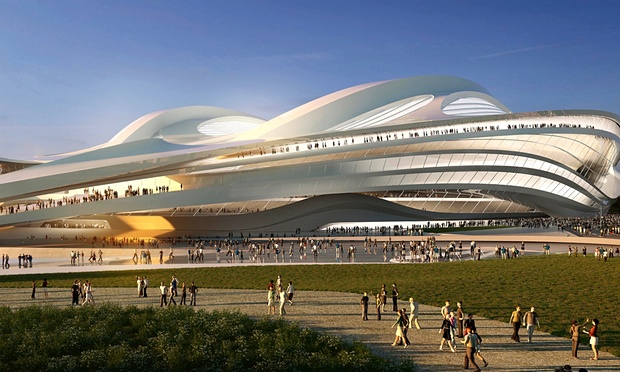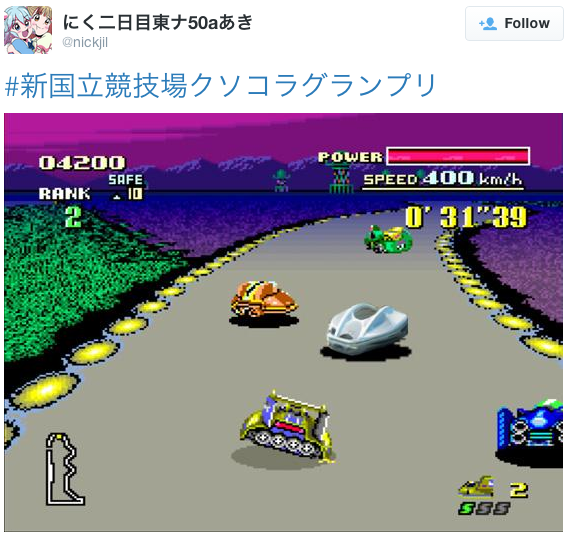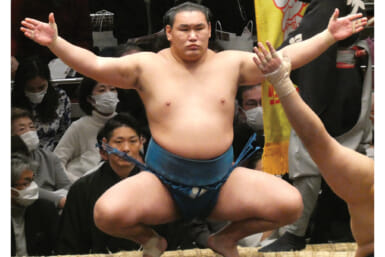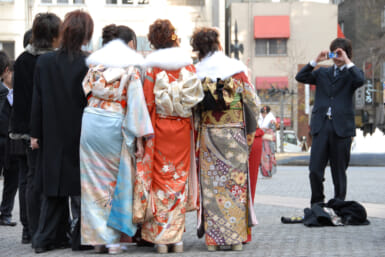The Tokyo 2020 Olympic Stadium saga continues with a handful of controversial developments over the last few days.
London-based firm Zaha Hadid Architects (ZHA), who had won the bid for the original building design, have had their ¥130 billion plan scrapped by the government as actual costs are now being projected at almost twice that figure, which would make it the most expensive sporting stadium in history.
The mammoth bicycle helmet–shaped stadium has unsurprisingly copped a lot of criticism from taxpayers due to its rising costs. With mounting pressure on Prime Minister Shinzo Abe to re-assess a more cost effective way forward, earlier this month he decided to halt the project in the face of the looming deadline of 2019’s Rugby World Cup final, which was scheduled to take place at the National Stadium.
For a refresher, get up to speed with Tokyo Weekender’s latest coverage here and check out this video tour of the original stadium plans.
Since then, not only has ZHA provided a statement defending their position while imploring the government to reconsider their stance, but Kimito Kubo, a Japanese official who has been heading the construction project, has stepped down from his post amidst the heat.
As reported by The Economic Times, Kimito Kubo, the Director-General of the Education Ministry’s Sports and Youth Bureau, is resigning from his position next month for what has been cited as “personal reasons” by the government, who are describing it as a simple personnel shuffle.
Speculation is rife that there is more to the story, with widespread opinion more in line with the idea that his resignation was an intentional move to take the blame for an embarrassing situation that has now involved very public rows, massive budget miscalculations, contentious design aesthetics and poor project management.
With Prime Minister Shinzo Abe’s plans to go back to the drawing board announced, a new design bidding process is in the pipeline for the next few months.
In the wake of these developments, ZHA hit back, saying that their original design should be revised rather than scrapped altogether. They issued a statement in an attempt to clarify their side of the story.
According to The Japan Times, the statement began by saying that “Our teams in Japan and the U.K. feel it is necessary to set the record straight.”
The statement continued, “Our warning was not heeded that selecting contractors too early in a heated construction market and without sufficient competition would lead to an overly high estimate of the cost of construction.
“To reduce the risk of further increases in costs, the venue not being ready in time for the Tokyo 2020 Games and being of lower quality, the prime minister’s review should build on the investment in the detailed design knowledge already established and focus on the need for construction contractors to work in partnership with this expert team.”
In contrast, The Japan Sport Council (JSC), who are overseeing the whole process, admitted to labor and materials costs contributing to the increased spending; however, they maintain that two-thirds of the budget blowout is due to Zaha Hadid’s unconventional design features.
In ZHA’s statement, they claim to have written to the Prime Minister to “offer [their] services to support his review of the project with the current design team. ZHA has also outlined how making use of the significant investment in detailed design work already carried out offer[s] the most cost-effective solution to create the best new National Stadium for the people of Japan for the next 50–100 years.”
Read the ZHA’s full statement on their website here, and stay tuned for further developments.
Meanwhile, in other very serious National Stadium news, local netizens have proposed a few of their own suggestions for how Zaha Hadid’s design could be put to better use (via Tokyo Desu):
—Chris Zajko
Featured Image: AP













